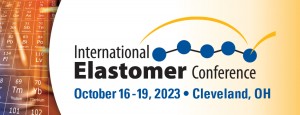The International Elastomer Conference was recently held in Cleveland, Ohio, from October 16th to 19th. This show consists of technical seminars, plus a machine and material suppliers expo. This show is very important in the rubber industry, looking at new products, equipment, and current trends. This is also good for OEMs that don’t have much rubber experience but work with these components. The seminars provide background on rubber formulation and mixing. Also, many material suppliers get a chance to ask any technical questions they might have or request advice on how to improve performance.
Supply
As we move away from the supply disruptions caused by COVID, we are being told that many of the polymer shortages have improved. Right now, the concern is with HNBR products.
There is still a shortage because of the transfer from FKM to HNBR and its usage in the EV market. Zeon is adding 50% capacity to their plant in 2025, which will greatly help US-supplied HNBR polymers. Solvay has improved its supply of FFKM polymers, with offerings of standard grades and semiconductor grades.
Chemical shortages have all but improved. There is still the possibility of polymer shortages with more bans on Russian products in the EU and US. Russia exports large quantities of carbon black and various polymers.
Trends
Many companies are increasing their sustainable offerings. New carbon blacks are coming online using renewable feedstocks. Carbon black is made with the burning of natural gas as well as oil. Replacing these feedstocks with renewable sources helps with sustainability and creates less reliance on fossil fuel pricing.
New compounds and polymers for the EV market include compounds to help with dampening while being flame resistant. Also, compounds that help dissipate heat from charging manifolds and battery compartments. New rubber compounds will help add more miles to tires due to the weight of EVs.
PFAS regulations were a big topic at this conference. There are many proposed regulations that could have a large effect on the rubber industry. As we know, FKM and Fluorosilicone are PFAS. When molded, these polymers should not result in the extraction of PFAS into waterways like other liquid PFAS. Therefore, these polymers should not be classified in the same way. If they are grouped together, these high-temperature polymers with excellent chemical resistance will be taken off the market without an available substitute. This problem has the potential to shut down the automotive and aerospace market until a substitute is found.
Helpful Courses
Essentials of Silicone Rubber – This course looks at what silicone rubber is. It provides a look into how silicone is made, its formulations, and the differences in polymer types. It also provides information on processing and how silicone parts are made.
Rubber Explained – This is a good overview of rubber compounding. It gives the basics on what chemicals go into a compound. It also provides processing and testing information, plus a good overview of rubber industry standards for specifications.
Rubber Vulcanization & Curing Chemistry – This course looks at how rubber is vulcanized. It provides a look into sulfur, peroxide, diamine, and other curing systems, the benefits of each cure system, and any problems that may arise.
These are just a few of our takeaways. As always, it was a very informative show. It was a great time to catch up on current vendors and find new ones. Each year there is an expo, so be sure to check the Rubber Division of ACS for more information.
